Does your winter landscape look brown and dry? When cold temperatures and the first frost descend, don’t despair; there are winter-flowering plants you can grow in the cold weather. This list of great plants can add winter color to your landscape and gardens. This year, why not plant a few flowers and shrubs that are early bloomers and add a pop of color to your landscaping during the winter months?
Most people do not think of gardening in the winter. The grounds are left bare or covered with snow. It is a legitimate concern to worry that the soil may be too cold to allow germination. However, you can still have a beautiful garden and lawn if you know the kind of flowers to plant that love the cold. This article explores winter garden ideas highlighting great flowers and plants that should do well in this difficult gardening season.
15 Winter Plants for the Garden
This list is a mixture of flowers and flowering shrubs and trees that will flower sometime during the cold months of winter into early spring. These listed plants, shrubs, and trees are not just for mild climates, either. There are quite a few that will bloom early, even in the northern cold, although a harsh winter may not be conducive for all of these plants to grow and thrive.
I have listed the USDA Hardiness growing zone for each plant. Your local nursery can help you determine if a flower or plant will grow well in your USDA hardiness zone, when to plant those flowers and plants, and how to care for them.
Hubby and I moved to Florida earlier this year, moving from a 6b growing zone in New York State to an 8b/9a in Florida. It is an experience learning how to grow flowers and vegetables in a new zone. We have a lot of outdoor space here – quite a bit more than we had up north. In the spring, I plan on having the gardens completely redone. I want some fruit trees, fewer flowers, and more flowering shrubs. There is little reason I cannot have them in the winter down here, and a better chance they will bloom in the winter than in the summer (it is HOT here).
When searching for plants and flowers that will grow well in the winter, it is a good idea to make sure the plants are well suited to your growing area and take into account your wildlife. There is no reason to plant a deer smorgasbord if you live in a highly populated deer area. There are plenty of plants that will work in cold weather, including winter-blooming perennials! But do pay attention to the growing season for the plants you are trying to grow. Not all plants, even if planted in the correct zone, will grow in an area. A lot depends on soil conditions, wind, and moisture. With a bit of research, you can have colorful flowers (or at least white flowers), ground cover, or even winter vegetables in many parts of the country.
15 Winter Plants for the Garden
Does your winter landscape look brown and dry? When cold temperatures and the first frost descend, don't despair; there are winter-flowering plants you can grow in the cold weather. This list of great plants can add winter color to your landscape and gardens. This year, why not plant a few flowers and shrubs that are early bloomers and add a pop of color to your landscaping during the winter months?
Snowdrops
Snowdrops (Galanthus nivalis) are sweet, small white flowers that add extraordinary beauty to your garden in the winter season. They grow fast and spread quickly. You can spot them easily when taking a simple stroll through the woods in your neighborhood. The flowers are native to Europe. In the US, they grow well in hardiness zones 5 to 8. Snowdrop bulbs should be planted in autumn with the 'eyes' facing up. By late February, the flowers start to form as the plants start to benefit from the exposure to sunshine. In mid-march, the droopy, bell-shaped, white flowers start to open up. After this, snowdrops quickly propagate to fill the space in your garden.
Leucojum/Snowflakes
These are bell-shaped flowers you will probably find growing between cracks of rocks in your driveway or garden. Leucojums are good attractors of pollinators because their white bulb flowers are rich in pollen. It is a hardy perennial flower that loves exposure to the full sun or partial shade. Spring snowflakes flower during Spring to Winter period, with the green stalks growing up to 26 inches tall. The overhanging, bell-shaped white flowers with green markings are the most distinguishing characteristic of the leucojums. They love slightly acidic soils and can grow well in moist regions. (Hardiness zone 3-9)
Winter Aconite
Winter aconites are members of the ranunculus group of wildflowers. It is no coincidence then that their flowers look like yellow buttercups. Aconites are toxic to humans and animals, so be careful with them if you have kids at home. They can create complications when ingested. Winter aconites are hardy annuals that bloom at the end of January or early February. They can grow in almost all kinds of soils although they prefer slightly-alkaline soils. Winter Aconites mix well with snowdrops. (Hardiness zone 4-7)
Winterhazel
The winterhazel (Corylopsis) plant is technically shrubs, but when landscaping a small homestead, you can plant them as small trees. Winterhazels spread out when they grow older. When young, they have an oval and upright growth that lasts over 20 years. There is a lot you can do with winterhazel when landscaping. You can create a good hedge by spreading some of the branches to intertwine with other shrubs. Hazels bloom in mid-winter and have yellowish-purple tiny strap-like petals. These fragrant flowers last a long time after blooming (up to a month or longer). Once the flowers fade after the spring season, the tree forms large flat leaves that push the tree through the summer season with little or no effort from your end. In the fall, the flowers get amazing, bright yellow colors. Once the leaves fall, the flower buds begin to show in preparation for blooming in the winter season. The two common hazels include Chinese hazel and a hybrid between Chinese hazel and Japanese witch hazel; winter hazel is shorter than witch hazel. (hardiness zone 5-8)
Winter Jasmine
Winter Jasmine (Jasminum nudiflorum) blooms in late winter to early spring (as early as January) after the plant has been subjected to a period of constant chilling. The key to flowering Jasmines is to subject them to a cool period for several weeks. Winter Jasmine is a deciduous perennial that you will find growing over walls or in containers along a driveway or walking path. Since they do not grow tall, they make good ground covers. Jasmines are not fussy about the soil type as long as it is well-drained. (Hardiness zone 6-9)
Crocus
Crocus is among the earliest flowering plants that create a vibrant winter and spring garden. Crocus come in different colors. The most popular crocus species are the saffron crocus which bears wonderful purple flowers. When you plant crocus in autumn, you will be assured of a vibrant late winter, early spring garden. If you are lucky, you may have the flowers blooming in late winter. They can grow in almost any type of soil as long as there is good drainage. (hardiness zone 3-8)
Pansy
Pansies are cold-season flowers that will surely brighten your flower bed. They have bright, heart-shaped petals that come in different colors depending on the variety of the plant. You can have flowers with yellow blotches, white and purple blotches, purple blotches with yellow eyes, and a mixture of other different colors. Pansies with yellow blotches are the most popular for landscaping. You can spot them from a mile away.
Some of the brightest pansy varieties include the princess series, Jolly joker, and the Fama series. Winter pansies can be paired with other bright-colored plants, such as primroses and violas. They also do well when planted in a monochrome scheme in pots or containers. Real Estate agents will recommend pots of flowers to brighten up a drab garden or great color in gardening containers near the front door. The best time to plant pansies is in the fall so that they can go through winter and spring. By summertime, you should pull them out because they do not have a high tolerance for heat. If you are in a cold zone, you can have pansies growing throughout the year. Pansies are one of the best winter garden plants. (Hardiness zone 4-10)
Daffodils
Daffodils are perennial, deer-resistant flowers native to North America. It is hard to miss the characteristic yellow flowers during the winter season. The best time to plant daffodils is in the fall season. Double daffodils have beautiful double petals that make them look like peonies. When planting daffodils, find a spot that receives about 6 to eight hours of sunshine daily. Dig a hole that is at least double the size of the bulb and plant the bulb with the pointy side facing up. Daffodils are not very fussy about the soil type, although they do well in slightly acidic soils. (Hardiness zone 3-8)
English Primrose
Primroses are native to England, where they grow in abundance in the wilderness. There are more than 400 species of primroses spread across the world. In the US, primroses thrive in cooler climates in zones 4 to 8 in both full sun and partially shaded areas. They grow to about 20 inches tall and 20 inches wide when they mature. Primroses need very little care once they become established.
Camellia
Camellias are among the most beautiful winter flowers in the world. The flowers come in different shapes and sizes. The plant bears beautiful glossy leaf foliage. In the winter season, when most plants are not flowering, camellias bloom with beautiful flowers that make your garden vibrant. Camellias are good for hedging because they grow tall. The most common types of camellias in the US are japonicas and sasanquas. Sasanquas have small leaves and bear small flowers. They grow thinner than japonicas. Japonicas bear larger leaves and flowers. Japonicas require more protection from the sun than sasanquas. These are the kind of flowers you would find in a hedge in a shaded part of the garden because they grow dense and bushy. (Hardiness zone 7-10)
Hellebores
Hellebores (Helleborus spp.) are easy to grow. They like fertile, free-draining soils and grow well in partially shaded areas. They are deer-resistant plants that start flowering in mid-winter and carry through to late spring. They come in all sizes and virtually all the colors of the rainbow. You will find hellebores in white, green, shades of black, and shades of pink. Some hellebores bear large double-row petals flowers while others bear small ones. Some petals are spotty, while others are clear. When you grow different varieties of hellebores together, you will have a rainbow-colored garden. Hellebores work well with daffodils and other woodland flowers to create a diverse and colorful garden. (Hardiness zone 3-9)
Holly Bush
The vibrant red berries of the holly bush and the robust pattern and texture of the leaves make this one of the common flowers to grow in the winter. They are good companion flowers that bring extra color to the garden. The leaves are glossy, tough, and with spiky edges. You will often find these flowers in Christmas crafts. There are hundreds of species of the Holly Bush genus out there, and they all thrive in temperate regions. They range from small shrubs to tall trees, depending on the zone. The most popular types include the Japanese Holly and the blue holly. The berries come in a range of colors ranging from pink, black, yellow, and different shades of red. In the fall, they set their berries to persist throughout the winter. Hollies prefer moist, well-drained, slightly acidic soils and can grow well in both full sun and partial shade. If you want to enjoy them all year long, plant them in the spring season. (Hardiness zone 5-9)
Japanese Pieris
Also known as the flaming silver Pieris, this plant produces beautiful fire-red petals when fully mature. They grow slowly and reach about 4 or 5 feet tall. It can take up to 20 years to get to this height. Pieries mix well with ferns and hydrangeas in the garden. Pieris love slightly-acidic well-drained soils. Pieris do not do well in clay soils. They can thrive in the sun or in partially-shaded areas. (Hardiness zone 6-8)
Mahonia
Mahonia grows as a dense, golden-yellow shrub that prefers shaded areas of your garden. This is what makes them excellent shrubs to use as hedges. They grow in late winter or early spring with berries that attract pollinators and birds to the garden. They prefer moist, well-drained soil. They are not too fussy about the soil type. Since mahonia flowers take a long time to grow, plant them in a section of your garden where there is a minimal disturbance. The flowers start in autumn and persist to the winter season, giving you a big, brilliant head of bright yellow colors all through the winter season. During the winter season, you may need to protect these flowers from strong cold winds that can burn the berries. Mahonia can grow up to 10-feet high and spread to almost 11-feet. However, if you have a small garden, you can control its growth and spread by pruning. (Hardiness zone 5-9)
Star Magnolia
Native to Japan, the star magnolia is a hardy shrub that grows up to 20 feet tall. Magnolias are early-to-mid-season spring flowering shrubs. The star magnolia is one of the smaller plants in the magnolia family. The flower bears whitish-pink (and sometimes light-purple) petals. They are white on the inside, and a pinkish hue is present on the outside of the petal. They are fragrant flowers, easy to grow, and almost pest-free. They grow slowly and hence do not require much pruning. During wintertime, the flower buds retain their beautiful texture throughout the season up to springtime. (Hardiness zone 4-9)
More winter garden tips:
● 10 Tips for Winter Gardening
● How to Repair Grass Damaged by Snow Mold
● For more Gardening posts on Ann’s Entitled Life, click here.
● Enjoy this post? Sign up for the Ann’s Entitled Life FREE Weekly Newsletter to stay connected.
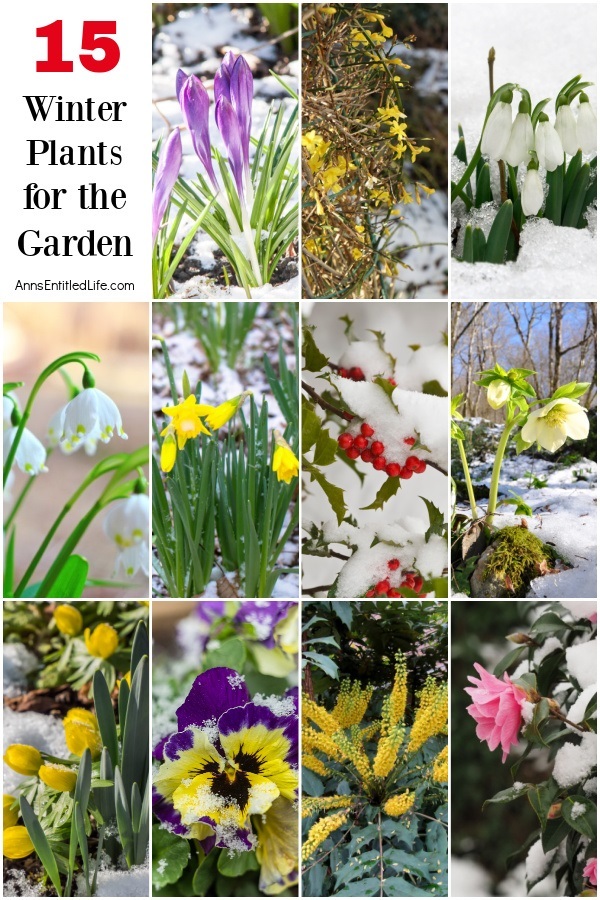
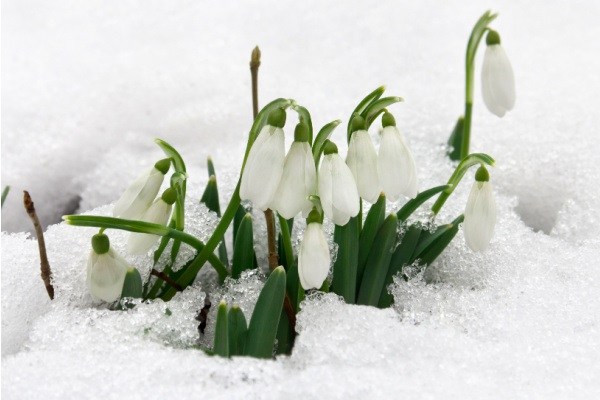
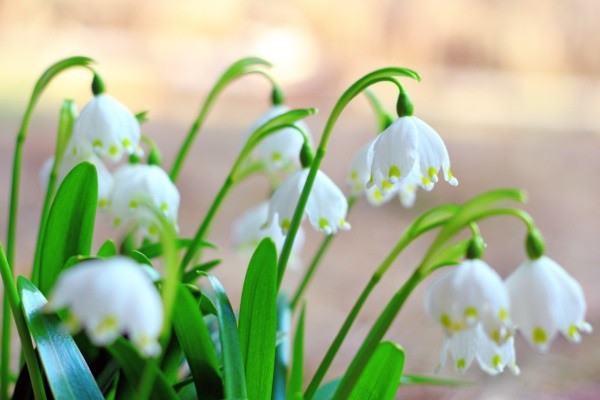
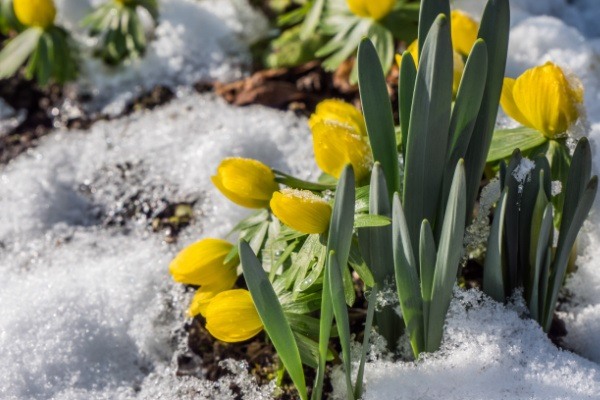
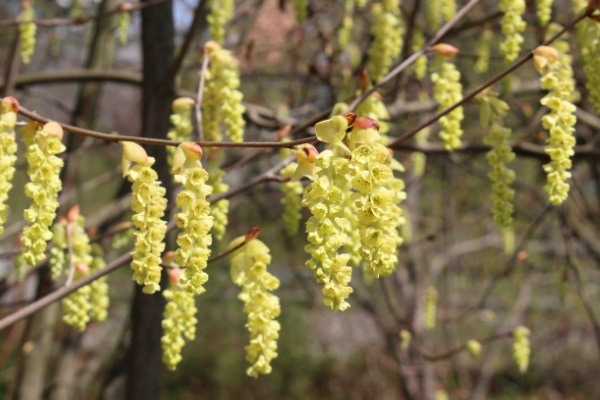
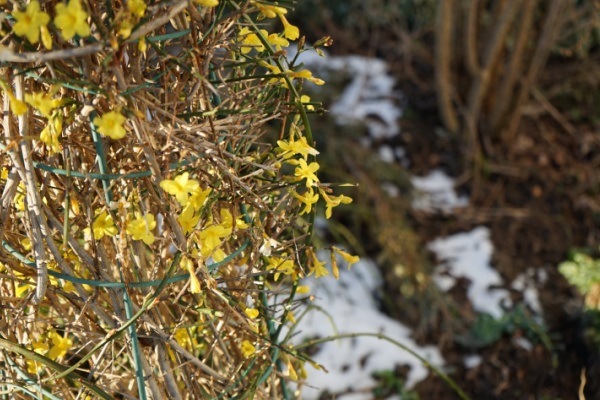
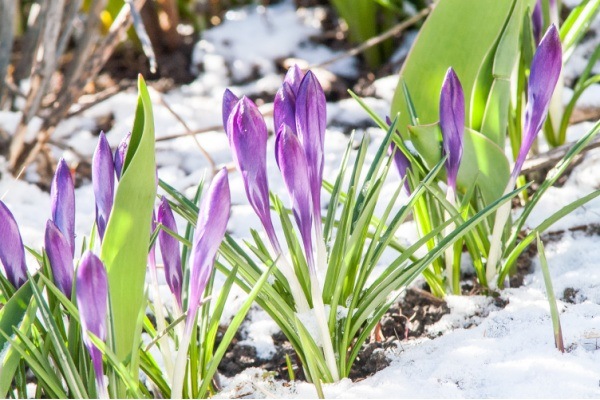
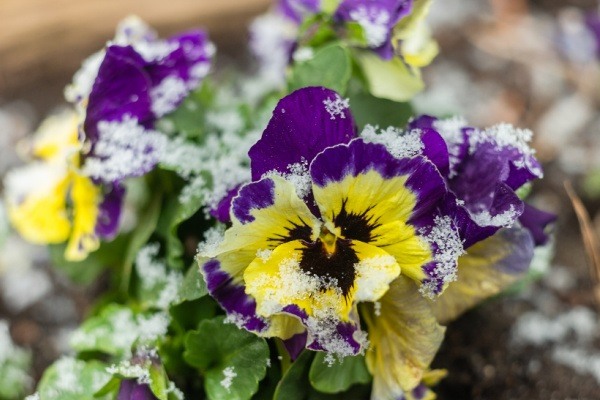
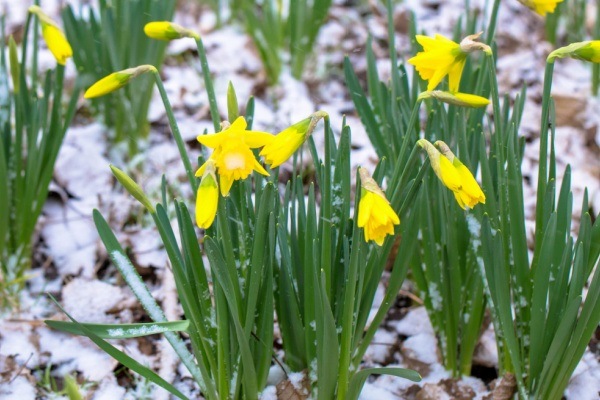
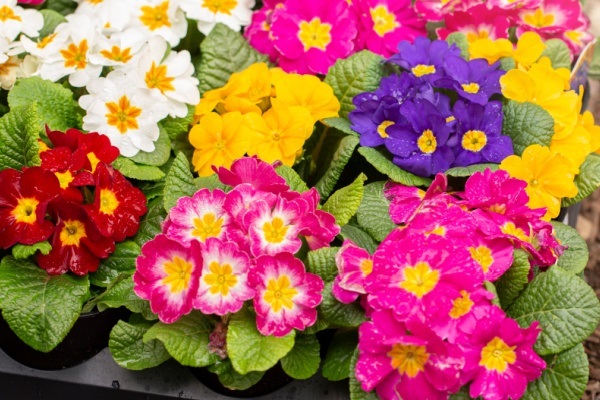
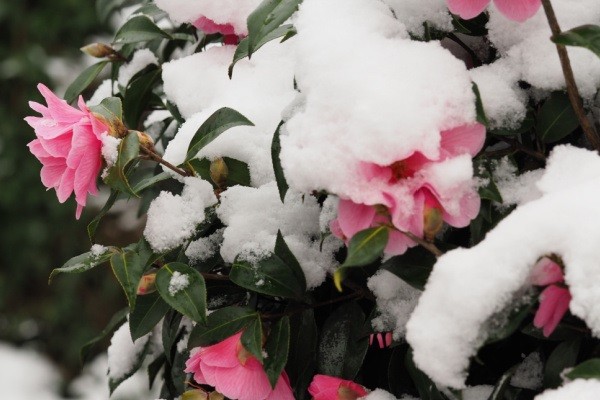
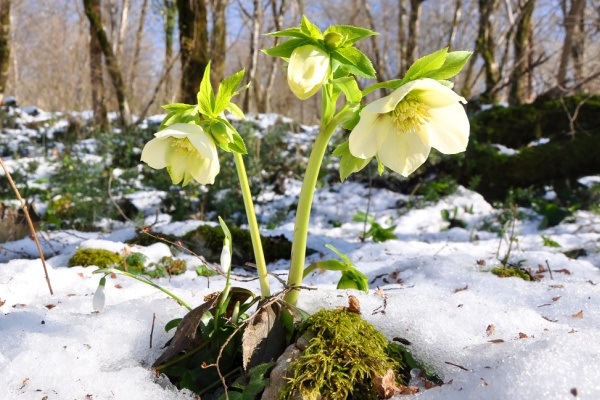
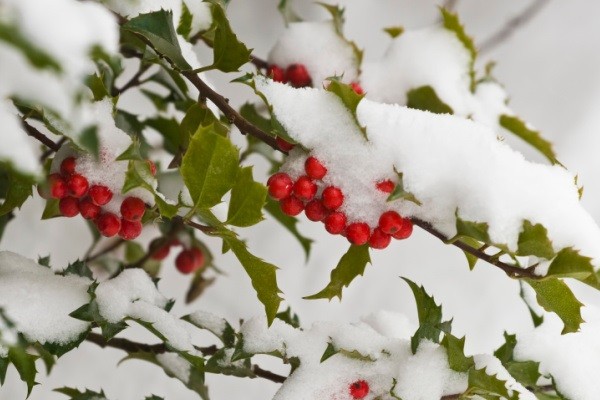
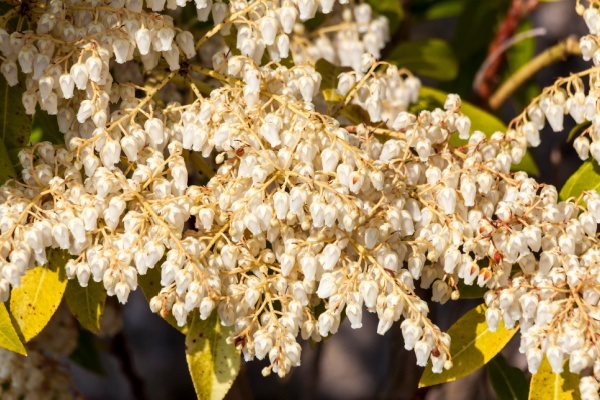
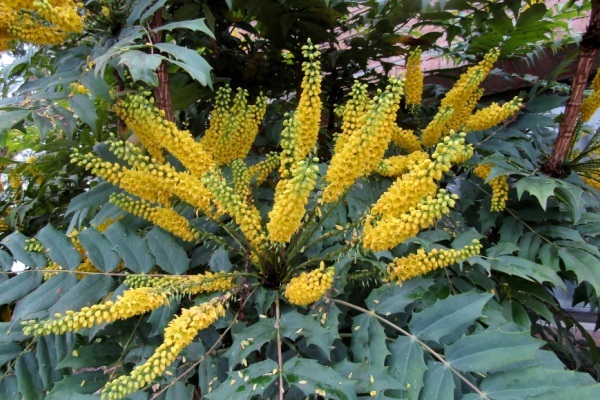
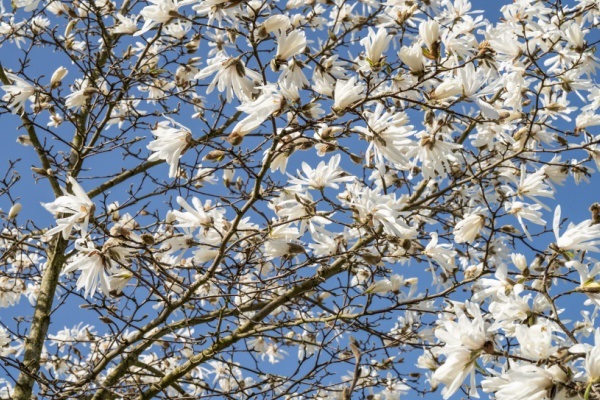
Leave a Reply